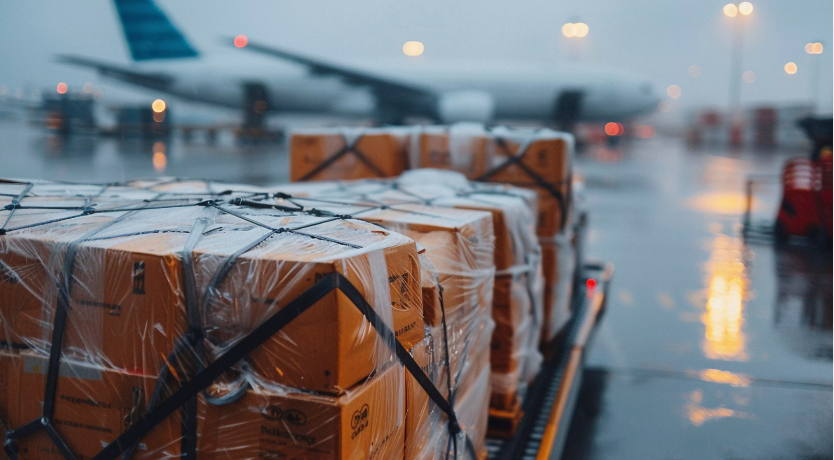
Learn how effective logistics in disaster-prone areas requires crisis logistics planning, disaster logistics management, and a resilient emergency supply chain.
The Importance of Disaster Logistics Management
Disaster logistics management involves the coordination and transportation of resources to affected regions in the aftermath of natural or man-made disasters. Whether it’s hurricanes, earthquakes, floods, or pandemics, disaster logistics management is crucial in ensuring efficient and effective relief efforts. Logistics teams must be prepared for any situation, as disaster logistics management requires addressing challenges like damaged infrastructure, disrupted supply lines, and unsafe conditions. The primary goal of disaster logistics management is to deliver supplies as efficiently as possible to mitigate the impact on affected communities.
The effectiveness of disaster logistics management in disaster-prone areas is often the difference between life and death. Properly managed disaster logistics management can accelerate response times and increase the reach of humanitarian aid. By having a solid disaster logistics management framework, organizations and governments can mobilize critical resources faster, potentially saving lives and reducing the long-term impacts of the disaster.
4o-term impacts of the disaster.
Crisis Logistics Planning: Preparation is Key
While disasters may be unpredictable, crisis logistics planning is the proactive approach needed to mitigate the negative impact. Organizations that regularly operate in disaster-prone areas must have contingency plans and adaptable frameworks. These frameworks should include everything from alternative transport routes to partnerships with local organizations that can assist in emergency situations.
The key components of crisis logistics planning include:
- Pre-positioning Supplies: Storing essential supplies like food, water, and medical equipment in strategic locations can drastically reduce response times.
- Training Teams for Rapid Response: Well-trained logistics teams that can act swiftly and efficiently in the face of disaster are critical. They must be able to assess the situation, adapt to the conditions, and deploy resources accordingly.
- Coordination with Governments and NGOs: Collaborating with government agencies, non-governmental organizations (NGOs), and local authorities can help streamline operations and ensure that the emergency supply chain remains functional.
The Role of Technology in Disaster Logistics
Incorporating advanced technologies is becoming an essential aspect of managing logistics in disaster scenarios. Tools such as Geographic Information Systems (GIS), real-time tracking, and predictive analytics allow organizations to plan better and act faster.
- Geographic Information Systems (GIS) can provide real-time mapping of disaster-hit areas, helping logistics teams identify safe routes and potential bottlenecks.
- Drones are increasingly used to deliver supplies to areas that are difficult to access due to damaged infrastructure.
- Predictive analytics can help in forecasting potential disaster events, allowing for better resource allocation and emergency supply chain planning.
These technologies not only increase the efficiency of the supply chain but also ensure that resources are delivered in the most effective manner during a crisis.
Emergency Supply Chain: Ensuring Continuity During Crisis
A resilient emergency supply chain is essential for maintaining a flow of critical resources when disaster strikes. Unlike regular supply chains, an emergency supply chain needs to function under extreme stress, adapting to sudden disruptions, and making quick decisions in an uncertain environment.
Key strategies to ensure the functionality of the emergency supply chain include:
- Flexibility: A supply chain that can quickly adapt to changing conditions, such as road closures or shortages of transport options, will be more successful during a disaster.
- Alternative Transportation: In the event of damaged roads or blocked access points, organizations should have access to alternative transport methods, such as helicopters or boats, to reach affected areas.
- Collaboration and Partnerships: Partnerships with local suppliers, transportation companies, and relief agencies can make the emergency supply chain more robust. Local partnerships allow for quicker access to resources and improved knowledge of the terrain.
Challenges in Logistics in Emergency Situations
Operating in disaster-prone areas brings with it a host of challenges. Beyond the physical damage to infrastructure, there are human, political, and logistical factors that need to be addressed.
- Infrastructure Damage: Roads, bridges, and ports are often damaged during natural disasters, making it difficult to transport goods.
- Lack of Resources: Limited access to fuel, labor, and storage facilities can delay supply chain operations.
- Coordination Failures: The chaotic nature of disasters often leads to a breakdown in communication between different relief organizations and local governments.
These challenges highlight why effective logistics in emergency situations require a mix of planning, flexibility, and collaboration with various stakeholders.
Building Resilience in Disaster-Prone Areas
To build resilience in disaster-prone areas, organizations must focus on long-term strategies that go beyond immediate crisis response. This can include investing in better infrastructure, training programs, and innovative logistics solutions. Additionally, a focus on sustainability and eco-friendly logistics practices can help mitigate some of the damage caused by natural disasters.
Governments should encourage the development of resilient infrastructure, such as flood-resistant roads and earthquake-proof buildings, while also working closely with private companies to ensure the continuity of logistics services during and after a disaster.
Conclusion
Managing logistics in disaster-prone areas is a complex but crucial task. It requires not only quick thinking and adaptability but also proactive crisis logistics planning and a well-maintained emergency supply chain. By embracing technology, forming strategic partnerships, and focusing on flexibility, organizations can improve their response to disasters and minimize the human and economic toll.
The unpredictability of disasters will always be a challenge, but with the right strategies in place, logistics operations can become more resilient and responsive in the face of adversity.

